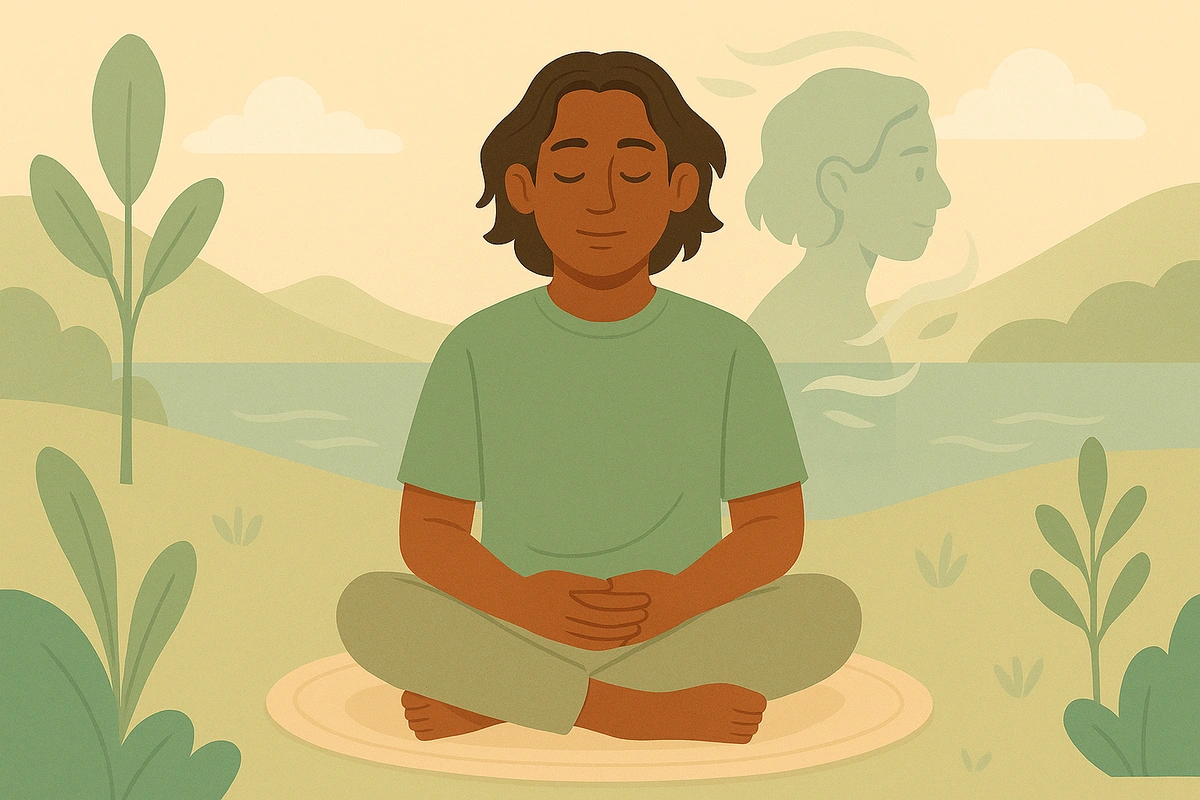A mindfulness practice that helps you step back from overwhelming thoughts and emotions by cultivating an observing perspective. Research shows that developing this observing awareness enhances emotional regulation and reduces anxiety by creating psychological distance from difficult internal experiences.

The Observer Self exercise teaches you to access a stable, unchanging part of yourself that can observe thoughts, feelings, and sensations without getting caught up in them. This practice draws from mindfulness traditions and acceptance-based therapies to help you develop what researchers call "meta-awareness"—the ability to be aware of your awareness.
When you're overwhelmed by anxiety, depression, or stress, you often become fused with these experiences, feeling like they define who you are. The Observer Self helps you recognize that you are not your thoughts or emotions—you are the awareness that observes them. This shift in perspective creates space between you and difficult experiences, allowing for clearer thinking and more skillful responses to life's challenges.
The Observer Self exercise works by engaging what neuroscientists call meta-cognitive awareness—the ability to observe your own mental processes. This creates what researchers describe as "psychological distance" between you and your experiences.
When you're caught up in difficult emotions, you experience what psychologists call "cognitive fusion"—you become so identified with thoughts and feelings that they feel like absolute reality. Mindfulness practices that cultivate observing awareness help you step back from this fusion and recognize experiences as temporary mental events rather than permanent truths about yourself.
Research shows that developing this observing perspective enhances emotional regulation through both top-down and bottom-up mechanisms. Top-down regulation involves conscious cognitive strategies, while bottom-up regulation occurs through changes in how you automatically process emotional information.
The practice also strengthens what acceptance and commitment therapy calls "self-as-context"—the stable sense of self that remains consistent across changing experiences. This provides a foundation of psychological stability that isn't dependent on having pleasant thoughts or positive emotions.
Neuroimaging studies demonstrate that mindfulness practices like the Observer Self exercise create measurable changes in brain regions associated with attention, emotional regulation, and self-referential processing. These changes support improved mental health and resilience over time.
"I can't find the observer—I just get caught up in my thoughts" - This is normal and expected. Start by noticing that you've been caught up, which is itself an act of observing. Gently return attention to the present moment.
"The observing perspective feels cold or detached" - The observer can be both detached and compassionate. Practice bringing gentle kindness to your observing awareness rather than harsh judgment or criticism.
"My thoughts and emotions feel too intense to observe" - Start with less overwhelming experiences like physical sensations or sounds. Build your capacity gradually before working with highly charged emotional content.
"I feel like I'm trying too hard to be the observer" - Let go of effort and simply notice what's already here. The observing awareness is naturally present—you're just learning to recognize and rest in it.
"Nothing seems to change when I practice" - Change often occurs gradually and subtly. Focus on the process of practicing rather than expecting dramatic results, and consider keeping a practice journal to track small shifts.
"I keep forgetting to use this during stressful moments" - Set gentle reminders throughout the day to check in with the observing perspective. With practice, this awareness becomes more automatic during challenging times.